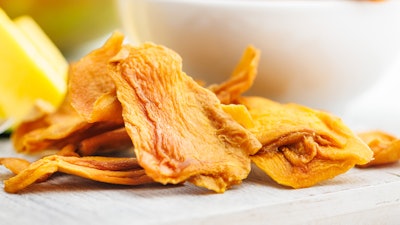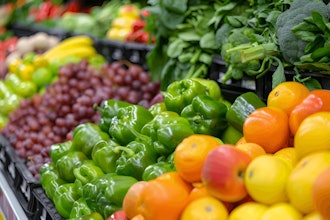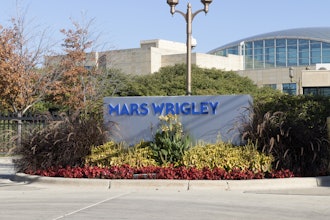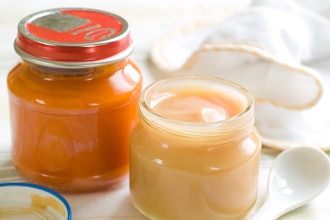
Dried fruit is a tasty snack or sweet addition to recipes, but the water removal process often requires heat and energy. In a step toward more sustainable food preservation, researchers reporting in ACS Food Science & Technology have developed a method to dry food at room temperature by adjusting air pressure conditions and using food-safe calcium chloride. In a proof-of-concept, the system successfully dried mango and apple slices to commercial levels.
Dehydrating food turns perishable items such as fruit into long-lasting pantry staples. Most tabletop and industrial-scale food dehydrators use circulated hot air to remove moisture, which is simple and effective but requires a lot of energy. Sun-drying foods uses mostly solar energy but is slow and darkens the final products. So Luis Bastarrachea is developing food preservation processes that don't require heat. In this recent study, the moisture-adsorbing salt calcium chloride, an ingredient used in cheese and molecular gastronomy applications, was incorporated into a room-temperature dehydration method and tested to see if it would impact the drying fruit’s color.
 A pilot test of a system using vacuum and calcium chloride successfully dried apple and mango.Luis Bastarrachea
A pilot test of a system using vacuum and calcium chloride successfully dried apple and mango.Luis Bastarrachea
After four days under standard air pressure, the calcium chloride solutions drew out and adsorbed less moisture from the fruits than those placed under vacuum. The fruit slices at standard air pressure also dried inconsistently. Slices on the top screen contained 50-70% water (by weight) and those on the bottom had 20-30% water after the dehydration process. In contrast, the vacuum-assisted method produced consistently dried mango and apple pieces made up of about 30% moisture, which is similar to the amount in commercially available dried fruit, and represented a removal of approximately 95% of the initial water mass. Vacuum-dried mango pieces kept the raw fruit’s attractive bright yellow color; however, the two dehydration methods darkened the apples by similar amounts. In addition, scanning electron microscopy images showed breakdown of starch granules in all the samples, but more of them broke down under standard pressure, suggesting that the vacuum-assisted method slows down deterioration mechanisms and retains freshness.
And the water pulled out of the fruit could potentially be reused. Bastarrachea says that “the collected water in the calcium chloride solution can be removed by evaporation, and the reconcentrated calcium chloride solution can be reutilized in more dehydration cycles.”
Ultimately, the recovered water could be used in industrial applications or further treated for human consumption.
The authors acknowledge funding from the U.S. Department of Agriculture, National Institute of Food and Agriculture, Agriculture and Food Research Initiative.






















